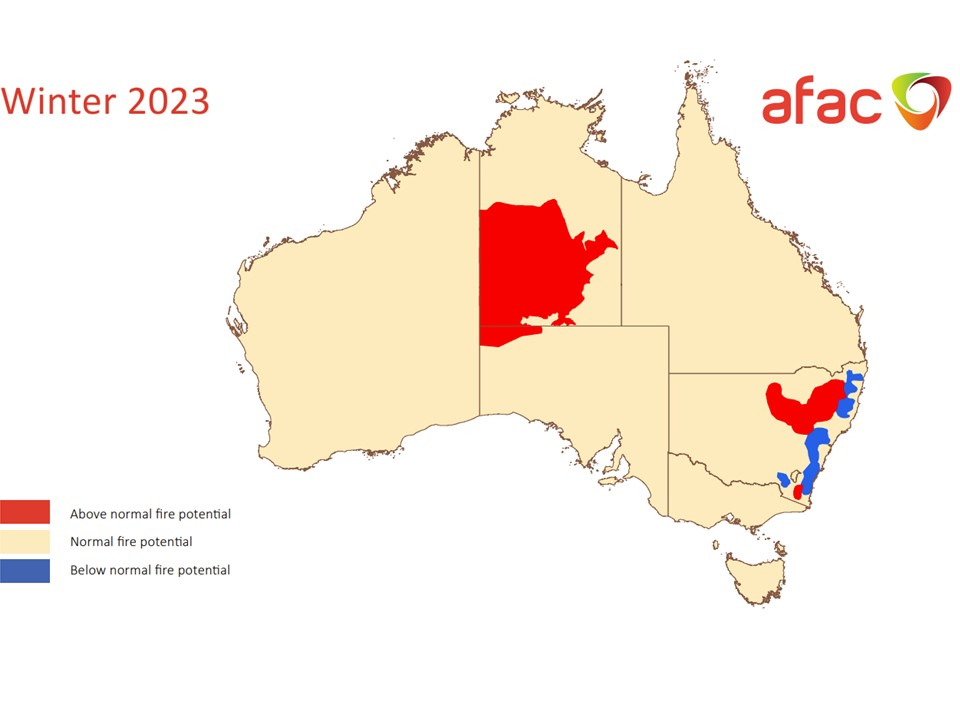Latest News
Fire Season Update June 2023
Wednesday, 28th June 2023

AFAC’s Seasonal Outlook
Australia has returned to a more normal period of rainfall following a very wet 12 months due to La Niña and negative Indian Ocean Dipole events influencing the Australian climate.
February to April saw above average temperatures for much of the southern and central parts of the country and this trend is expected to continue. Climate models anticipate development of El Niño conditions during winter, and the El Niño-Southern Oscillation is currently at El Niño Watch status.
Most of Australia is likely to experience below median rainfall for the winter period and maximum temperatures are likely or very likely to be above median for most of the country. The combination of reduced rainfall and above average temperatures and evaporation results in outlooks for drier than average root zone soil moisture by late winter for much of the country.
Much of Central Australia is showing above normal fire potential for this outlook due to reduced rainfall, higher temperatures, and higher fuel loads, including of the invasive Buffel Grass. Parts of NSW also have above normal fire potential driven by the risk of frost curing of high grass fuel loads. In parts of the Great Dividing Range fuels remain reduced from the 2019-20 fire season and these areas are predicted to continue to provide below normal fire potential.
While most of Australia shows normal fire potential during this outlook period, anyone living and working in these areas needs to be vigilant. Destructive and deadly fires can still occur during normal bushfire seasons across Australia.
Learn more here: AFAC Seasonal Outlook Winter 2023 - https://www.afac.com.au/auxiliary/publications/newsletter/article/seasonal-bushfire-outlook-winter-2023
Long-range BOM forecast overview from the 15th of June
Learn more here: http://www.bom.gov.au/climate/outlooks/#/overview/summary